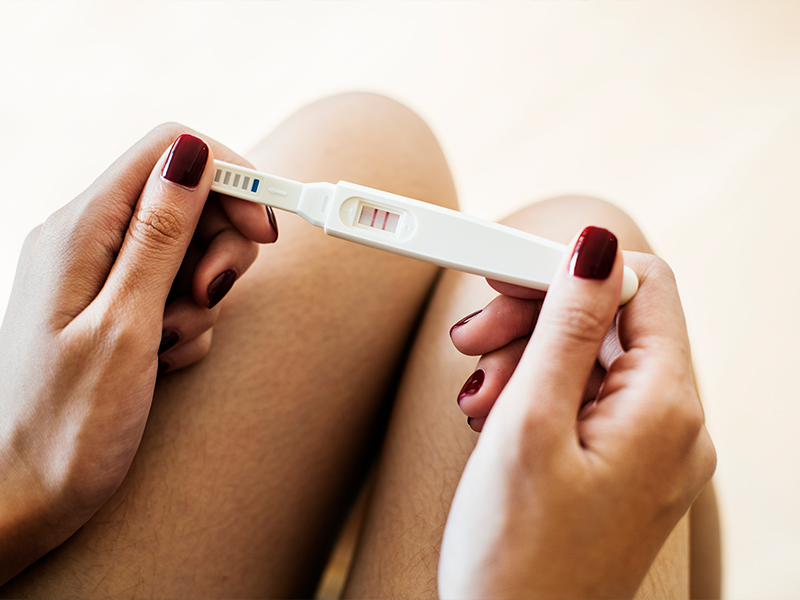Today, many couples do not address the subject of parenthood until much later in their lives. Schooling and career paths seem to take priority for many 20-30-year-old men and women, but the reality is that female fertility begins to decrease at age 30 and for some even sooner. Women’s biological clocks cannot always accommodate delayed reproduction. Thankfully, advancements in reproductive technology are encouraging and have given newfound hope to couples who may not have had these same opportunities just a few years ago.
TC46 connected with Fertility Consultant Dr Pallavi Prasad of Nova IVF Fertility, Bangalore to shed some light on fertility preservation. Here she explains the impact of age on fertility, various options available for women and the success rate of fertility preservation.
1. The total quantity of eggs drops over a woman’s lifespan
The total quantity of eggs and the quality of those eggs drop over a woman’s lifespan; the decline begins in her mid-thirties and ends with menopause, the definitive end of female fertility. The term advanced maternal age refers to the fact that the lower quality raises the risk of genetic disorders or chromosomal abnormalities and miscarriages. Women of advanced age have a higher risk profile during pregnancy.
2. Fertility preservation is a process to preserve eggs
The fertility preservation process preserves or protects eggs, sperm, or reproductive tissue for having biological children later on in life. Fertility preservation is frequently suggested as a protective measure against future infertility. However, there is no guarantee that frozen eggs will result in a live birth.
3. Various options for fertility preservation
- Cryopreservation of embryos or oocytes: This approach, also known as embryo freezing, is the most popular and effective way to preserve a woman’s fertility. In vitro fertilization takes place in this process.
- Oocyte Cryopreservation: Unfertilized eggs are frozen and stored in this method, which is comparable to embryo cryopreservation.
- Shielding of the gonads for patients going for Radiotherapy: This mechanism is comparable to gonadal shielding for males. To protect the ovaries from radiation, measures such as directing rays at a narrow area or covering the pelvic area with a lead shield are taken.
- Transposition of the ovary for Patients going for Pelvic Radiotherapy: A small operation is performed to relocate the ovaries and, in certain cases, the fallopian tubes from the radiation-exposed area to a radiation-free area. They may, for example, be moved to a section of the abdominal wall that is not exposed to radiation.
Fertility treatments are highly advised to couples who are unable to conceive, and they have a good success rate. Check out your options here.
4. The basic facts about fertility preservation
- It is the ultimate act of self-care for women who wish to get pregnant later in life
- The more eggs a patient can freeze, the more likely it is that one of them will result in a baby
- Not all frozen eggs survive
- Egg quality deteriorates with age, as older eggs are more likely to have genetic defects
5. Millennial women should take charge of their fertility
Women’s careers are an important part of who they are and how they see themselves in the world. Being a mother and starting a family is a whole new responsibility, and many millennial women who are focused on building their careers have been seen delaying their choice of being a mother.
6. Egg freezing does not ensure pregnancy
Egg freezing does not ensure pregnancy in the future. If the frozen eggs fail to produce a pregnancy, you may need to consider a fresh IVF cycle or donor egg program. Damage to frozen eggs can occur during the Cryofreezing procedure. In this situation, you can either try IVF again or seek alternate treatment from your reproductive physician.
7. Egg-freezing costs between Rs. 1.7 to 2 lakhs
In India, egg-freezing costs between Rs 1.7 to 2 lakhs rupees. It covers the cost of the IVF procedure as well as egg retrieval. The cost of ICSI and embryo transfer is not included in this package. The drugs and injections required to stimulate the ovaries are included in the IVF treatment cost. The cost of the package includes egg collection, anaesthesia for the procedure, egg screening, denudation and egg vitrification procedure. The cost of egg freezing is also affected by the chosen duration of freezing. The longer the duration, the more costly it becomes.
8. Fertility preservation necessitates specialized attention
The idea of definitive infertility can cause significant psychological suffering in cancer patients, as the inability to reproduce can be a devastating blow to women’s self-esteem and relationships. Fertility preservation, on the other hand, is a subject that necessitates specialized attention and understanding from specialists in the field. As a result, teamwork between oncological units and fertility clinics is required to provide adequate counselling to each patient in a timely manner.
9. The success rate of oocyte freezing depends upon individuals
The success rate of oocyte freezing depends on the age of the woman and her ovarian reserve at the time of freezing. Roughly, 8 MII oocytes of good quality are needed to ensure 1 live birth.










